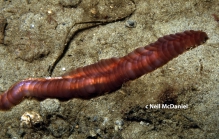RAS taxon details
Hololepida Moore, 1905
174506 (urn:lsid:marinespecies.org:taxname:174506)
accepted
Genus
- Species Hololepida australis Monro, 1936
marine, brackish, fresh, terrestrial
recent only
Moore, J.P. (1905). New species of Polychaeta from the North Pacific, chiefly from Alaskan waters. <em>Proceedings of the Academy of Natural Sciences of Philadelphia.</em> 57: 525-554, plates XXXIV-XXXVI., available online at http://biodiversitylibrary.org/page/26293556
page(s): 541 [details]
page(s): 541 [details]
Read, G.; Fauchald, K. (Ed.) (2025). World Polychaeta Database. Hololepida Moore, 1905. Accessed through: RAS (Eds.) (2025) Register of Antarctic Species at: https://ras.biodiversity.aq/aphia.php/www.pfeil-verlag.de/04biol/rest/aphia.php?p=taxdetails&id=174506 on 2025-09-12
RAS (Eds.) (2025). Register of Antarctic Species. Hololepida Moore, 1905. Accessed at: https://ras.biodiversity.aq/aphia.php?p=taxdetails&id=174506 on 2025-09-12
Date
action
by
2006-09-13 06:47:38Z
changed
Martinez, Olga
original description
Moore, J.P. (1905). New species of Polychaeta from the North Pacific, chiefly from Alaskan waters. <em>Proceedings of the Academy of Natural Sciences of Philadelphia.</em> 57: 525-554, plates XXXIV-XXXVI., available online at http://biodiversitylibrary.org/page/26293556
page(s): 541 [details]
additional source Day, J. H. (1967). [Errantia] A monograph on the Polychaeta of Southern Africa. Part 1. Errantia. British Museum (Natural History), London. pp. vi, 1–458, xxix., available online at http://www.biodiversitylibrary.org/bibliography/8596
page(s): 66; note: Day (1967: 44) provided an amended diagnosis of Alentia Malmgren, 1865 "to include Hololepida Moore, 1905" but with no further comment. Subsequent authors (eg Fauchald, 1977; Imajima, 1...
[details]
redescription Imajima, Minoru. (1997). Polychaetous annelids from Sagami Bay and Sagami Sea collected by the Emperor Showa of Japan and deposited at the Showa Memorial Institute, National Science Museum, Tokyo. Families Polynoidae and Acoetidae. <em>National Science Museum Monographs.</em> 13: 1-131., available online at https://ci.nii.ac.jp/naid/110004312467#cit
page(s): 65 [details] Available for editors
page(s): 541 [details]
additional source Day, J. H. (1967). [Errantia] A monograph on the Polychaeta of Southern Africa. Part 1. Errantia. British Museum (Natural History), London. pp. vi, 1–458, xxix., available online at http://www.biodiversitylibrary.org/bibliography/8596
page(s): 66; note: Day (1967: 44) provided an amended diagnosis of Alentia Malmgren, 1865 "to include Hololepida Moore, 1905" but with no further comment. Subsequent authors (eg Fauchald, 1977; Imajima, 1...
Day (1967: 44) provided an amended diagnosis of Alentia Malmgren, 1865 "to include Hololepida Moore, 1905" but with no further comment. Subsequent authors (eg Fauchald, 1977; Imajima, 1997) have retained Hololepida and Alentia as valid genera.
redescription Imajima, Minoru. (1997). Polychaetous annelids from Sagami Bay and Sagami Sea collected by the Emperor Showa of Japan and deposited at the Showa Memorial Institute, National Science Museum, Tokyo. Families Polynoidae and Acoetidae. <em>National Science Museum Monographs.</em> 13: 1-131., available online at https://ci.nii.ac.jp/naid/110004312467#cit
page(s): 65 [details] Available for editors
